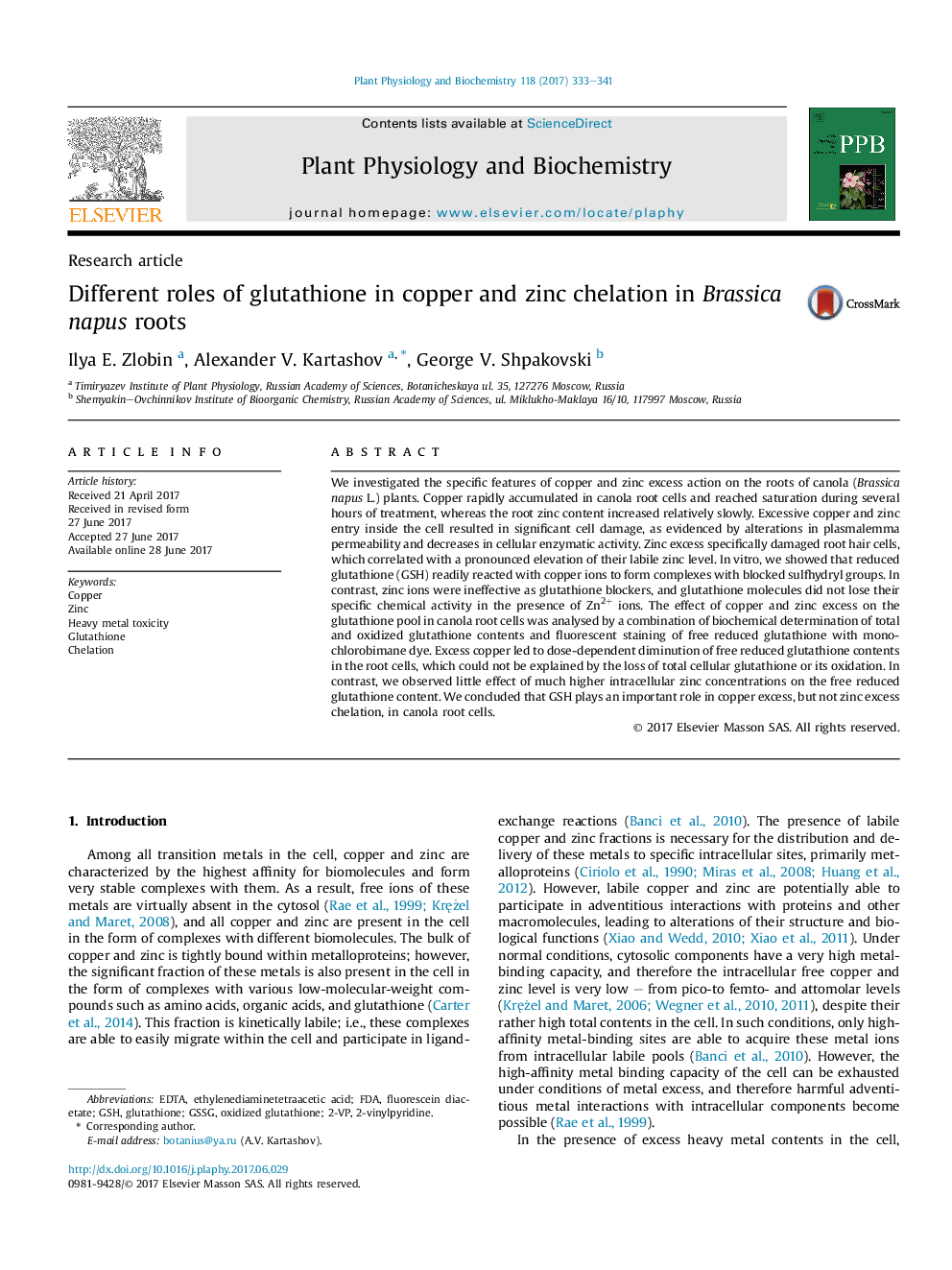| کد مقاله | کد نشریه | سال انتشار | مقاله انگلیسی | نسخه تمام متن |
|---|---|---|---|---|
| 5515448 | 1541903 | 2017 | 9 صفحه PDF | دانلود رایگان |

- Copper and zinc differed in the pattern of their accumulation in root cells.
- Intracellular availability of copper and zinc sharply increased under their excess.
- Cell damage correlated with the level of metal intracellular availability.
- Glutathione participated in the copper chelation, but not in zinc chelation in vivo.
We investigated the specific features of copper and zinc excess action on the roots of canola (Brassica napus L.) plants. Copper rapidly accumulated in canola root cells and reached saturation during several hours of treatment, whereas the root zinc content increased relatively slowly. Excessive copper and zinc entry inside the cell resulted in significant cell damage, as evidenced by alterations in plasmalemma permeability and decreases in cellular enzymatic activity. Zinc excess specifically damaged root hair cells, which correlated with a pronounced elevation of their labile zinc level. In vitro, we showed that reduced glutathione (GSH) readily reacted with copper ions to form complexes with blocked sulfhydryl groups. In contrast, zinc ions were ineffective as glutathione blockers, and glutathione molecules did not lose their specific chemical activity in the presence of Zn2+ ions. The effect of copper and zinc excess on the glutathione pool in canola root cells was analysed by a combination of biochemical determination of total and oxidized glutathione contents and fluorescent staining of free reduced glutathione with monochlorobimane dye. Excess copper led to dose-dependent diminution of free reduced glutathione contents in the root cells, which could not be explained by the loss of total cellular glutathione or its oxidation. In contrast, we observed little effect of much higher intracellular zinc concentrations on the free reduced glutathione content. We concluded that GSH plays an important role in copper excess, but not zinc excess chelation, in canola root cells.
Journal: Plant Physiology and Biochemistry - Volume 118, September 2017, Pages 333-341